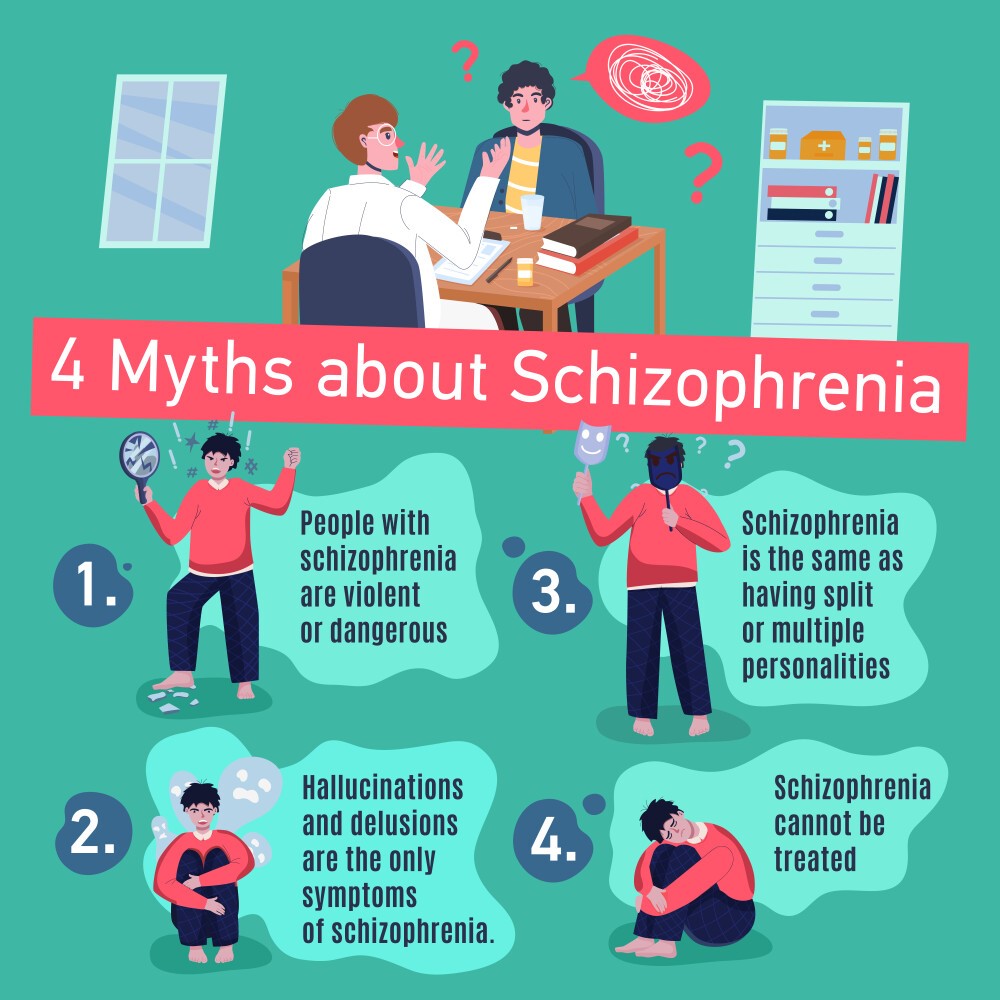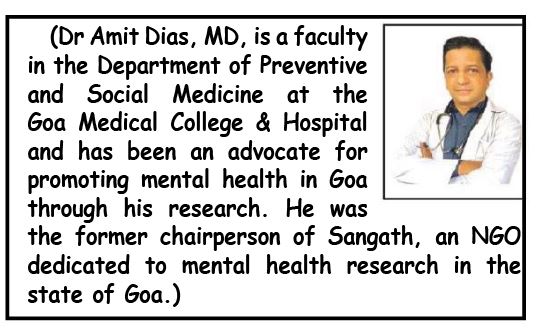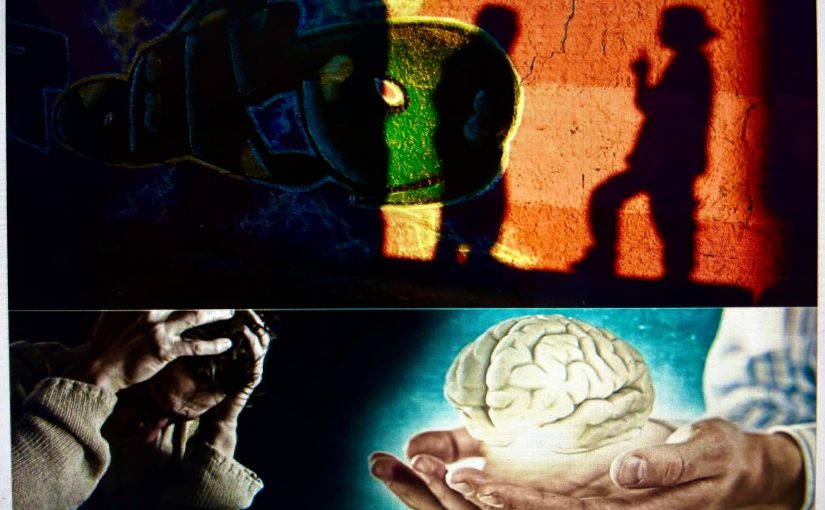It’s World Schizophrenia Day!
An interview with Dr Amit Dias
If it’s May 24 it’s World Schizophrenia Day. Here is Dr Amit Dias saying let’s break down the stigma and not our support for the cause of those who suffer from schizophrenia, while detailing the early signs and negative symptoms associated with the condition….let’s create a more aware and inclusive world!
Goan Observer: Schizophrenia is a big confusing word! How did it originate?
Dr Amit Dias: The word is thought to be derived from two Greek words, “skhizein” which means “to split” and “phren” which means “mind.” The Swiss Psychiatrist, Eugen Bleuler, first coined the term in 1911, given the fragmented thinking of people with this condition. The term is not meant to convey the idea of split personality or multiple personality as is often communicated through movies, spreading a wrong notion about this mental health problem.
People often associate it with “Split Personality” which is one of the biggest myths associated with this condition. People with schizophrenia do not have a “split” or multiple personalities. It is not the same as dissociative identity disorder. They have false ideas and delusions but do not experience different personality states and most do not pose a danger to others. People at large do need to be educated about the condition.
Q: What exactly is schizophrenia?
A: Schizophrenia is a chronic and severe mental disorder that affects how a person thinks, feels and behaves. People with schizophrenia may seem like they are not aligned with reality. Although schizophrenia is not as common as other mental disorders, the symptoms can be very disabling.
People with schizophrenia can have trouble distinguishing reality from fantasy, expressing and managing normal emotions, and making decisions. People with schizophrenia attempt suicide more often than people in the general population, and as per the estimates, up to 10 percent of people with schizophrenia commit suicide in the first 10 years of the illness — particularly young men with schizophrenia. They could have negative symptoms.
Q: Could you elaborate on the negative symptoms associated with schizophrenia and its impact?
A: Schizophrenia is a complex mental health disorder that can manifest with a variety of symptoms. These are generally categorized into positive, negative and cognitive symptoms. Negative symptoms refer to the absence or reduction of normal behavior and function. To make it easier, I would describe the key negative symptoms associated with schizophrenia as the five A’s:
AVOLITION:Avolition is the lack of motivation to initiate and perform self-directed purposeful activities. This includes basic tasks such as personal hygiene, dressing or cooking.
Impact: Individuals with avolition often find it challenging to start or sustain goal-oriented activities. This can lead to difficulties in maintaining employment, education, and social relationships.
ANHEDONIA:Anhedonia is the inability to experience pleasure from activities usually found enjoyable, such as hobbies, social interactions or sexual activities.
Impact: This symptom can severely affect a person’s quality of life, leading to a lack of interest in previously enjoyable activities and contributing to social withdrawal and isolation.
ALOGIA: This refers to poverty of speech or a reduction in the amount of speech. It can also manifest as poverty of content of speech, where the amount of speech is adequate but conveys little information.
Impact: this can make communication with others difficult and hinder social interactions, contributing to isolation and misunderstanding.
AFFECTIVE FLATTENING: Affective Flattening refers to a blunted affect, it is characterized by a reduced range of emotional expression. This can include facial expressions, voice tone, and gestures.
Impact: Individuals may appear unresponsive or emotionally indifferent, which can create challenges in forming and maintaining personal relationships and lead to misinterpretations of their emotional state by others.
ASOCIALITY: Asociality is the lack of interest in social interactions or the inability to form close relationships. This is different from social anxiety; it is more about a fundamental lack of desire or drive to engage socially.
Impact: This can result in significant social isolation and difficulty establishing a support network, which is crucial for recovery and well-being.
Q: How can one treat the negative symptoms?
A: Negative symptoms of schizophrenia are often more challenging to treat than positive symptoms (such as hallucinations and delusions) and can significantly impact the overall functioning and quality of life. Management typically involves:
Medication: Antipsychotic medications, while primarily effective against positive symptoms, can sometimes help with negative symptoms. Additionally, some medications specifically target these symptoms.
Psychosocial Interventions: These include cognitive-behavioral therapy (CBT), social skills training, and vocational rehabilitation. Such interventions can help individuals develop strategies to manage symptoms and improve daily functioning.
Support Systems: This is part of the treatment. Building a strong support network of family, friends, and mental health professionals can provide essential emotional and practical assistance.
Lifestyle Modifications: Encouraging regular routines, physical activity, and engagement in meaningful activities can help mitigate some of the impacts of negative symptoms.
Understanding the nuances of these symptoms is crucial for both individuals with schizophrenia and those supporting them, as it fosters empathy, appropriate intervention and improved outcomes.

Q: You made a mention of the terms delusions and hallucinations. Can you explain the difference if there is one and how we can recognize them?
A: Delusions and hallucinations are both symptoms of psychosis and are part of an altered reality. They are often confused with each other, but they are distinctly different. Delusions are cognitive while hallucinations are sensory symptoms. To simplify, delusions are false beliefs that the person thinks are real. For example, they may believe that others are monitoring or threatening them, poisoning them, or reading their thoughts. Hallucinations cause a patient to hear, see, feel or smell something that is not there.
Q: When and in whom can we expect schizophrenia to appear? Are some people at higher risk?
A: Schizophrenia is a complex mental disorder that typically emerges in late adolescence or early adulthood, though it can appear at other ages as well. Let me try and explain the onset and demographics:
Age of Onset
Late Adolescence to Early Adulthood:
Men: Symptoms of schizophrenia often appear in men during their late teens to early 20s, typically between ages 16 and 25.
Women: For women, the onset is usually a bit later, often between ages 20 and 30. There is also a second peak of onset around menopause.
Childhood-Onset Schizophrenia:
Rare but possible, childhood-onset schizophrenia (COS) refers to the onset of symptoms before the age of 13. It is much less common and presents more severe developmental challenges.
Late-Onset Schizophrenia:
Schizophrenia can also develop later in life, although this is less common. Late-onset schizophrenia is defined as having onset after the age of 45. Symptoms in these cases may differ somewhat and often include more paranoid and less disorganized features.
Demographic and Risk Factors:
Genetics: Schizophrenia has a significant genetic component. Individuals with a first-degree relative (such as a parent or sibling) with schizophrenia have a higher risk of developing the disorder. The risk increases if both parents have the disorder.
Environmental Factors: Prenatal factors: Exposure to viruses, malnutrition, or significant stress during pregnancy can increase the risk of schizophrenia in the offspring.
Early Childhood Factors: Complications during birth, childhood trauma, and significant stress during early development are also associated with an increased risk.
Gender: As mentioned before, schizophrenia affects men and women equally overall, but men tend to develop the disorder at an earlier age and often have more severe symptoms.
Urbanicity: Growing up or living in an urban environment is associated with a higher risk of developing schizophrenia compared to living in rural areas. Factors such as increased stress, social fragmentation, and exposure to infections may contribute to this increased risk.
Substance Use: Drug abuse, particularly of cannabis and psychostimulants, is linked to an increased risk of developing schizophrenia, especially in individuals already at genetic risk.
Psychosocial Factors: High levels of chronic stress, social adversity, and immigrant status have also been linked to an increased risk of schizophrenia. These factors can contribute to the onset and exacerbation of symptoms.
Q: Are there any early signs of this condition that we need to be aware of?
A: Yes, before the full onset of schizophrenia, individuals often experience a prodromal phase, characterized by subtle symptoms that can last for months or even years. These may include:
• Social withdrawal
• Unusual thoughts or behaviors
• Decreased performance at school or work
• Anxiety and depression
• Reduced motivation and interest in daily activities
Q: How is the condition diagnosed?
A: It’s diagnosed based on a detailed patient history, symptom checklists (eg, hallucinations, delusions, disorganized thinking, negative symptoms), observation of behavior and functioning, exclusion of other medical or psychiatric conditions that could explain the symptoms. The diagnosis is the first step to care. Visit a psychiatrist and get a diagnosis if you observe the symptoms of schizophrenia.
Q: What is your message to our readers?
A: We need to “break down” the barriers of stigma that surround this condition. We need to educate ourselves and be empathetic towards those with this condition and encourage them to get treatment. We need to empower people with schizophrenia to lead fulfilling lives and emphasize the importance of community involvement and social support.

